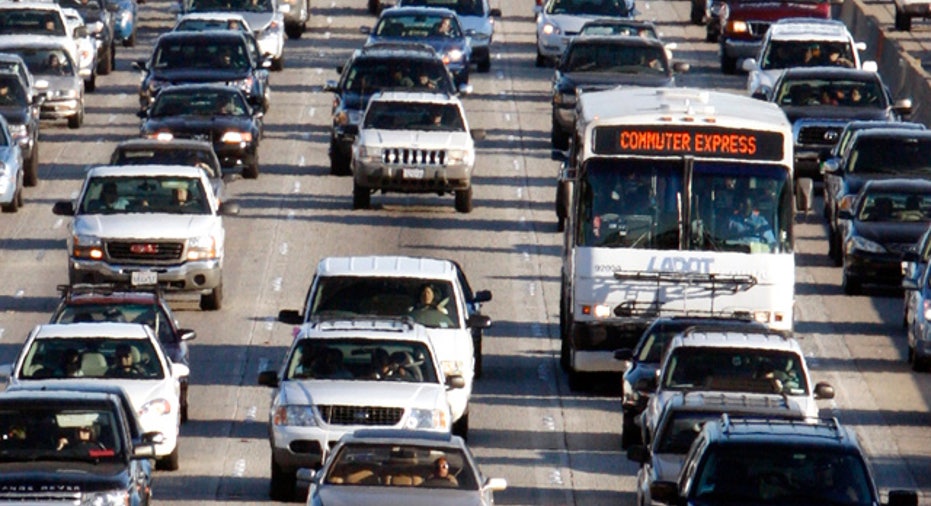Will You Have a Rear-View Mirror -- or a Camera?

The ground immediately behind your car could hide a toddler. Or 62 of them.
That's how many children KidsAndCars.org managed to hide in an SUV driver's blind spot. And it is part of the reason almost 300 people each year -- nearly half of them younger than 5 -- die after being hit by cars that are backing up, according to the National Highway Transportation Safety Administration (NHTSA). As many as 18,000 people are injured.
Consumer Reports rates the best and worst rear blind zones in vehicles. Pickup trucks, SUVs and minivans -- growing taller by the year -- scored worst. A 5-foot-1-inch driver in a Chevrolet Avalanche has a blind zone 50 feet deep, the magazine found. With a rear-view camera, the blind zone is reduced to zero.
Rear-view video cameras aren't a cure-all, but they're a great start, say auto industry experts -- or, they will be if regulators ever get around to setting standards needed to implement them.
The NHTSA first proposed mandatory backup cameras in 2010, effective for model year 2014. But the rules have been delayed three times, most recently until December. Transportation Secretary Ray LaHood said more time is needed for research and analysis.
The ticking clock costs lives, camera advocates say.
"How can we be making vehicles for a hundred years and nobody has thought about seeing behind us?" asks Janette Fennell, president and founder of KidsAndCars.org.
A camera or a mirror?
Congress ordered safety regulators to devise standards to improve visibility in 2008.
The camera proposal is the NHTSA's plan for meeting that mandate. The government estimates that the video systems would cost $159 to $203. Car buyers would almost certainly pick up the bill. (The average new-car transaction price in March was $30,748, according to Truecar.com.)
The rules could dictate what kind of display is used, where the screens could be placed, how quickly the video image appears and how much distortion the camera would allow.
The Alliance of Automobile Manufacturers, a Washington, D.C., industry lobbying group, supports Congress' mandate but would like alternatives such as better mirrors to be studied, says spokesman Wade Newton. For example, in low-light conditions, large side mirrors would help spot a running child better, Newton says.
But such mirrors would have to be as big as the ones that school buses have, which would limit the forward view, Fennell says.
Existing car mirrors are good enough to see a blind spot or blind zone if they're positioned correctly, says Dennis McCarthy, an assistant professor in the Occupational Therapy Department at Florida International University. McCarthy, who studies the limitations of older drivers, says seniors with arthritis who can't turn their neck and shoulders well can rely on mirrors to see blind zones if the mirrors are winged out enough.
Fennell doesn't discount the low-tech approach.
Anyone with kids knows that "in a split second (they) come from nowhere," Fennell says. The best thing to do before backing up is to walk around the car, she says. And have someone watch your kids as you leave. "They get out, they sneak out," she says. "We've had kids get out of a dog door to follow someone."
Why force the issue?
Rear-view cameras are available in 45% of new cars, according to Edmunds.com, but they don't all operate the same way.
Some have screens in the rear-view mirror; others share a screen with in-dash navigation. Some take 15 seconds to turn on, which can seem like an eternity when you're waiting to back up, says Jamie Lincoln Kitman, who writes for the National Public Radio show Car Talk.
"Some of them don't turn on right away, so you're stuck in the middle of the roadway waiting to reverse, or you reverse without looking back, which is a bad habit," Kitman says.
Even if the standardized cameras are required on all new cars starting in 2014, it will take decades for all drivers to have them because people keep their cars for a long time, says Russ Rader, spokesman for the Insurance Institute for Highway Safety.
In addition, the Highway Loss Data Institute says safety technology typically takes three decades to trickle down to the cheapest new cars. (See "5 safety features that do what drivers used to.")
Drivers who don't want to buy a new car with a rear-view camera can find a wireless one for about $100, says Fennell.
When cameras and computers do the work
Not everyone is a fan of a bigger high-tech safety net.
Rear-view cameras can lead to complacency on the part of drivers who think they can send a text message or make a call while backing out of a driveway "because they know the car is going to bail them out if they get into trouble," says Rader. (See "How safer cars make unsafe roads.")
Cameras also have hastened the demise of reversing skills, Kitman says. Drivers used to turn around and hold the passenger seatback to look behind them, he says, but fatter pillars and higher trunk lids make seeing behind the car more difficult, making more drivers turn to cameras.
Back-overs make up less than 1% of vehicle fatalities. Effort might be better put into other life-saving technologies that can help in more common types of accidents, Rader says. Lane-departure warnings and automatic collision-avoidance systems could save more lives, he says.
"There's no question that there are bigger catastrophes … to tackle," Rader says.
The original article can be found at CarInsurance.com:A rear-view camera in your next car -- maybe



















